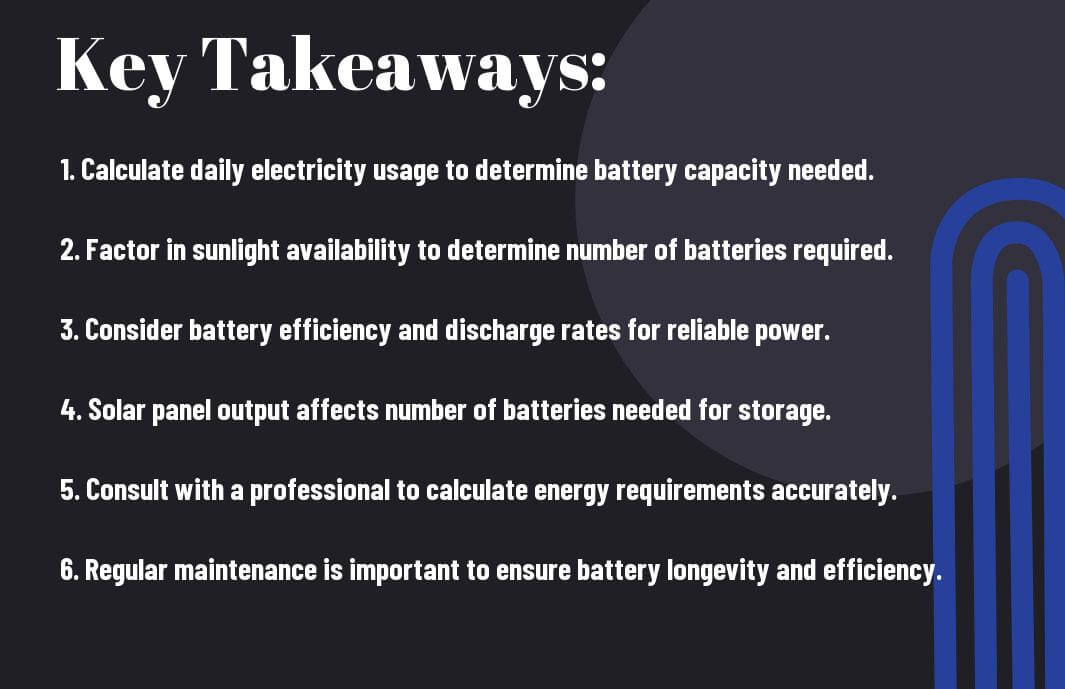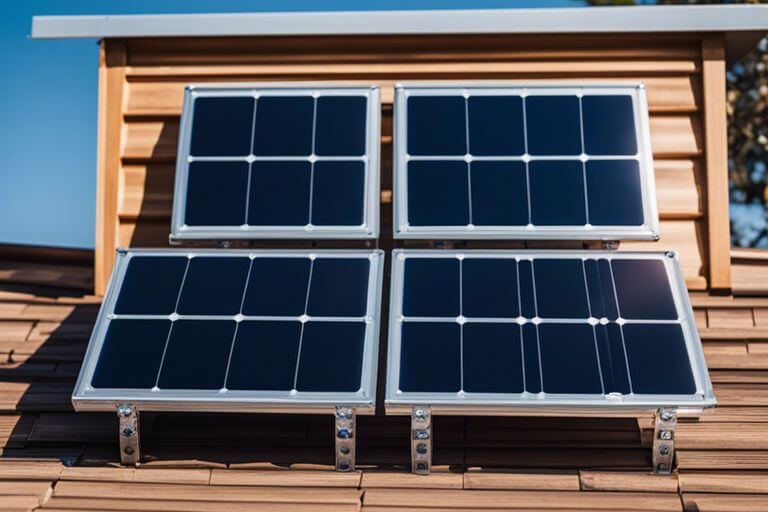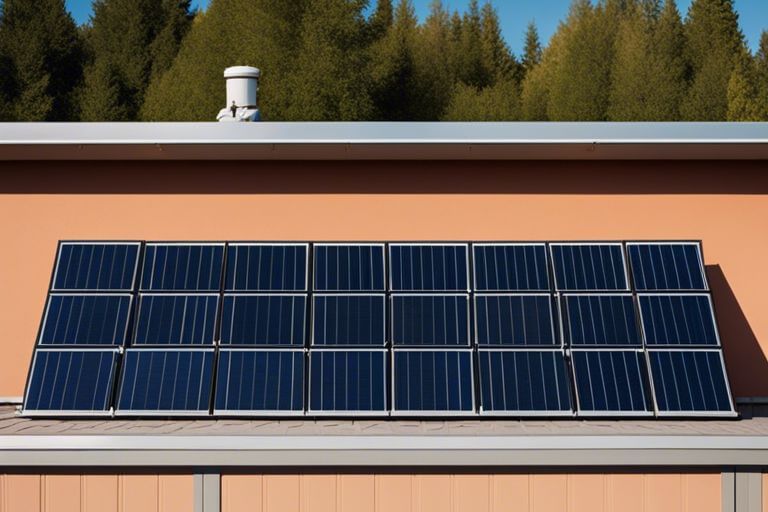Solar energy is an incredible resource, but figuring out how many solar batteries you need to power your house can be a bit perplexing. Fear not, as we’re here to shed light on this electrifying topic. By the end of this article, you’ll be equipped with the knowledge to initiate on your solar-powered journey confidently. So, let’s dive in and unravel the mystery of how many solar batteries it takes to keep your home running smoothly!
Key Takeaways:
- Sizing is important: It is crucial to correctly size the solar battery system to meet the energy demands of the house.
- Calculations matter: Factors like daily energy consumption, peak sun hours, and storage capacity are key in determining the number of solar batteries needed.
- Consultation is recommended: Seeking professional advice from a solar installer can help in determining the optimal number of solar batteries required for your specific needs.

Determining Your Energy Needs
Calculating Your Daily Energy Consumption
Energy consumption in a household can vary based on factors such as the number of occupants, appliances used, and lifestyle habits. To calculate your daily energy consumption, you can start by listing all the electrical devices in your home and their power ratings in watts. You can then estimate the number of hours each device is typically used per day. By multiplying the power rating of each device by the number of hours it is used and summing up the values for all devices, you can determine your total daily energy consumption.
Factors Affecting Energy Demand
An understanding of the factors that affect energy demand in your home can help you determine the number of solar batteries needed to power your house efficiently. Factors such as the size of your home, insulation levels, climate, and the efficiency of your appliances all play a role in determining your energy needs. For example, living in a colder climate may require more energy for heating, while using energy-efficient appliances can help reduce your overall energy consumption.
- Your lifestyle habits, such as the frequency of using high-power devices like air conditioners or electric heaters, can significantly impact your daily energy consumption.
- The number of occupants in your home also influences your energy needs, as more people typically result in higher electricity usage for lighting, cooking, and electronics.
Assume that by making simple changes like using LED light bulbs, insulating your home properly, and turning off appliances when not in use, you can lower your energy consumption and reduce the number of solar batteries required to power your home.
Solar Battery Capacity and Types
Now, let’s probe the world of solar batteries and their capacities and types. Concerning powering your home with solar energy, it’s necessary to understand the different types of batteries available and their capacity to store energy efficiently. Below, is a breakdown of the most common types of solar batteries and their capacities:
| Deep Cycle Batteries | Regular Batteries |
| Lithium-Ion Batteries | Lead-Acid Batteries |
| AGM Batteries | Gel Batteries |
| Flooded Batteries | Saltwater Batteries |
| Thin Plate Batteries | Thick Plate Batteries |
Deep Cycle Batteries vs. Regular Batteries
An necessary factor to consider is the type of battery you choose for your solar power system. Deep cycle batteries are designed to provide a steady amount of power over an extended period, making them ideal for solar energy storage. In contrast, regular batteries, such as car batteries, are not suitable for solar energy systems because they are designed for short bursts of high power.
Lithium-Ion Batteries vs. Lead-Acid Batteries
Capacity plays a crucial role in determining the effectiveness of solar batteries. Lithium-ion batteries are known for their high energy density, making them efficient in storing large amounts of energy in a compact size. On the other hand, lead-acid batteries are more affordable but have lower energy density and a shorter lifespan compared to lithium-ion batteries. Understanding the differences between these two battery types can help you make an informed decision when choosing the right battery for your solar power system.

Sizing Your Solar Battery Bank
Calculating the Required Battery Capacity
Keep in mind that the size of your solar battery bank will depend on several factors, including your daily energy usage and how many days of autonomy you want in case of limited sunlight. To calculate the required battery capacity, you’ll need to determine your daily energy consumption in kilowatt-hours (kWh) and multiply it by the number of days of autonomy you desire.
Considering Depth of Discharge (DOD)
Sizing your solar battery bank also involves considering the depth of discharge (DOD), which refers to how much capacity you can safely use from your batteries. A common DOD for lead-acid batteries is around 50%, meaning you should only discharge the batteries halfway to ensure longevity.
Any deeper discharge than the recommended DOD can significantly reduce the lifespan of your batteries. It’s crucial to strike a balance between utilizing the stored energy and preserving the health of your solar battery bank for long-term performance.
System Configuration and Wiring
Many factors go into determining how many solar batteries are needed to power a house. To dive deeper into this topic, you can explore this detailed guide on How Many Solar Batteries Are Needed to Power a House?. Understanding the system configuration and wiring is crucial for optimizing your solar power setup.
Series vs. Parallel Wiring Configurations
One important aspect of setting up your solar battery system is deciding between series and parallel wiring configurations. In a series configuration, batteries are connected in a chain, increasing the voltage, while in a parallel configuration, batteries are connected side by side, increasing the capacity. The choice between these configurations depends on your energy needs and the design of your system.
Importance of Proper System Sizing
Series and parallel wiring configurations play a vital role in ensuring your solar battery system operates efficiently. Proper system sizing involves calculating the right number of batteries and configuring them in the most optimal way. This step is crucial to maximize the performance and longevity of your solar power system.
For instance, if your system is undersized, you may run out of power during peak usage times, causing inconvenience and potentially damaging your batteries. On the other hand, an oversized system can lead to unnecessary costs and reduced efficiency. Therefore, it’s crucial to work with a professional to determine the best system size for your specific energy needs.

Charging and Discharging Cycles
The Impact of Charge Cycles on Battery Life
One of the key factors that affect the lifespan of solar batteries is the number of charge cycles they go through. Each time you charge and discharge a battery, it counts as one cycle. As you use your solar power system, these cycles add up over time and can wear out the battery. Typically, solar batteries are designed to last for a certain number of cycles, often between 1,000 and 5,000 cycles, depending on the type and quality of the battery.
Managing Depth of Discharge for Longer Battery Life
With solar batteries, the depth of discharge (DoD) refers to how much of the battery’s capacity you use before recharging it. For example, if you use half of the battery’s capacity before recharging it, the DoD is 50%. Managing the DoD of your solar batteries is crucial for prolonging their lifespan. Shallow discharges, where you only use a small portion of the battery’s capacity before recharging, are less stressful on the battery and can help extend its life. On the other hand, deep discharges, where you regularly deplete a large portion of the battery’s capacity, can shorten the battery’s lifespan significantly.
Cycles.
Additional Considerations
Inverter Efficiency and Battery Compatibility
With solar batteries, it’s not just about the number you need, but also about the efficiency of your inverter and the compatibility with your batteries. The inverter is crucial for converting the direct current (DC) energy from the solar panels into alternating current (AC) that your home can use. Make sure your inverter is efficient to maximize the energy stored in your batteries.
Furthermore, not all batteries are compatible with all inverters. It’s crucial to check the specifications of both your batteries and your inverter to ensure they work well together. Mismatched components can lead to inefficiencies and potential damage to your system.
Monitoring and Maintenance Requirements
On the topic of maintenance, solar batteries require regular monitoring and upkeep to ensure they function optimally. Some batteries may need to be topped up with distilled water periodically, while others require firmware updates. Monitoring your battery system allows you to catch any issues early and prevent major problems down the line.
Another consideration is the warranty and support offered by the manufacturer. You want to choose a reputable brand that backs its products with a solid warranty and excellent customer service. This way, you can have peace of mind knowing that your investment is protected.
Summing up
Taking this into account, the number of solar batteries needed to power a house depends on several factors such as energy consumption, battery capacity, and duration of backup power needed. By assessing your household’s energy needs and incorporating solar panels, you can determine the appropriate number of batteries required to keep your home running smoothly.
FAQ
Q: How many solar batteries are needed to power a house?
A: The number of solar batteries needed to power a house depends on various factors such as the energy consumption of the house, the size and capacity of the batteries, the amount of sunlight available, and whether you are connected to the grid or aiming for off-grid living.
Q: What factors should be considered when determining the number of solar batteries needed for a house?
A: Factors to consider include the daily energy consumption of the house, the capacity and voltage of the batteries, the efficiency of the solar panels, the amount of sunlight the location receives, whether the system will be connected to the grid or off-grid, and whether there are backup power sources available.
Q: Can a house be powered solely by solar batteries?
A: Yes, a house can be powered solely by solar batteries if the system is designed properly to meet the energy needs of the house. This may require a larger number of batteries, efficient solar panels, and a backup power source for times when there is limited sunlight.
